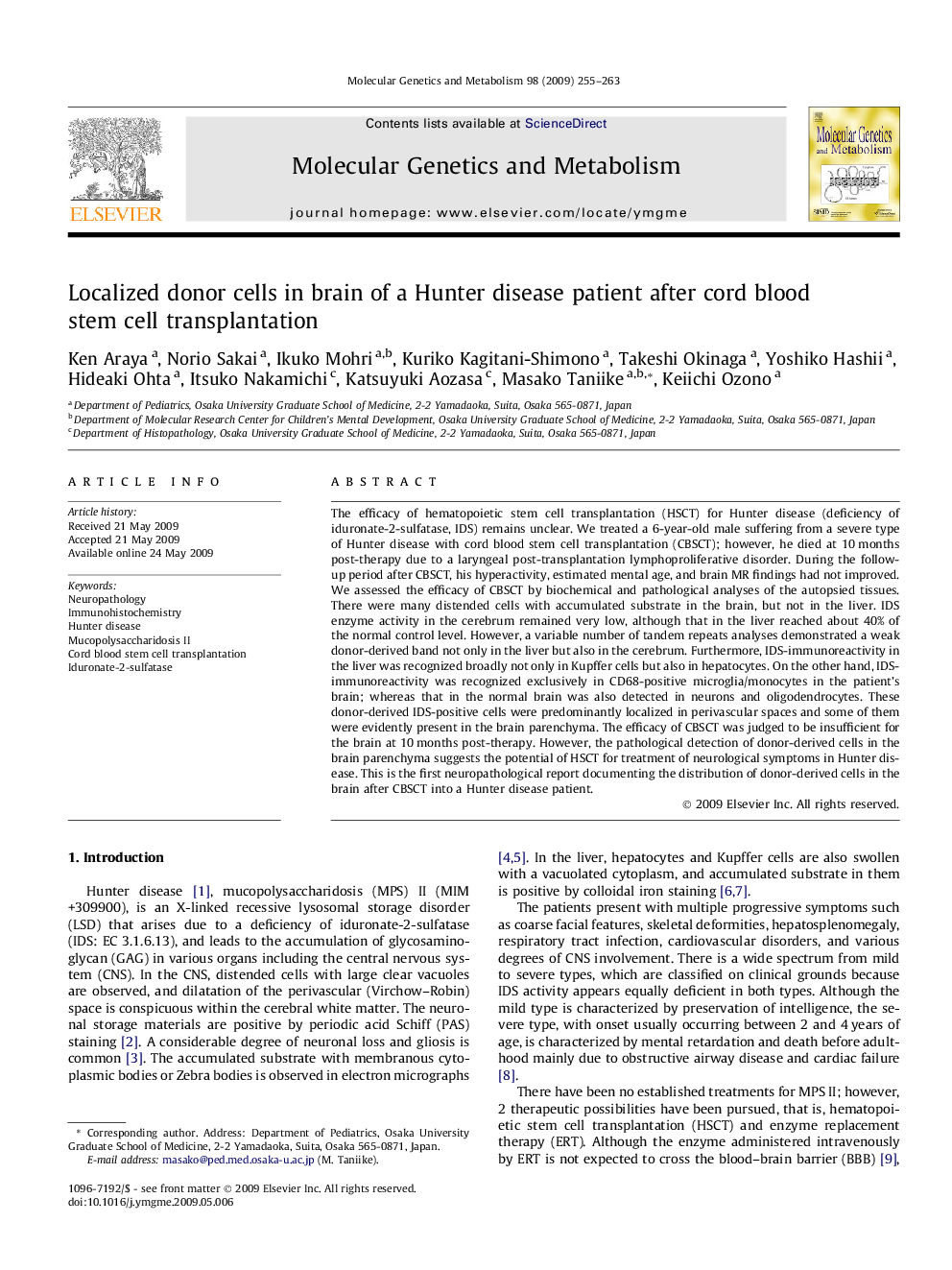| کد مقاله | کد نشریه | سال انتشار | مقاله انگلیسی | نسخه تمام متن |
|---|---|---|---|---|
| 1999781 | 1065871 | 2009 | 9 صفحه PDF | دانلود رایگان |

The efficacy of hematopoietic stem cell transplantation (HSCT) for Hunter disease (deficiency of iduronate-2-sulfatase, IDS) remains unclear. We treated a 6-year-old male suffering from a severe type of Hunter disease with cord blood stem cell transplantation (CBSCT); however, he died at 10 months post-therapy due to a laryngeal post-transplantation lymphoproliferative disorder. During the follow-up period after CBSCT, his hyperactivity, estimated mental age, and brain MR findings had not improved. We assessed the efficacy of CBSCT by biochemical and pathological analyses of the autopsied tissues. There were many distended cells with accumulated substrate in the brain, but not in the liver. IDS enzyme activity in the cerebrum remained very low, although that in the liver reached about 40% of the normal control level. However, a variable number of tandem repeats analyses demonstrated a weak donor-derived band not only in the liver but also in the cerebrum. Furthermore, IDS-immunoreactivity in the liver was recognized broadly not only in Kupffer cells but also in hepatocytes. On the other hand, IDS-immunoreactivity was recognized exclusively in CD68-positive microglia/monocytes in the patient’s brain; whereas that in the normal brain was also detected in neurons and oligodendrocytes. These donor-derived IDS-positive cells were predominantly localized in perivascular spaces and some of them were evidently present in the brain parenchyma. The efficacy of CBSCT was judged to be insufficient for the brain at 10 months post-therapy. However, the pathological detection of donor-derived cells in the brain parenchyma suggests the potential of HSCT for treatment of neurological symptoms in Hunter disease. This is the first neuropathological report documenting the distribution of donor-derived cells in the brain after CBSCT into a Hunter disease patient.
Journal: Molecular Genetics and Metabolism - Volume 98, Issue 3, November 2009, Pages 255–263